
Dreadlocks, also known as dreads or locs, are a hairstyle made of rope-like strands of hair. This is done by not combing the hair and allowing the hair to mat naturally or by twisting it manually. Over time the hair will form tight braids or ringlets.

The American Museum of Natural History (AMNH) is a natural history museum on the Upper West Side of Manhattan in New York City. Located in Theodore Roosevelt Park, across the street from Central Park, the museum complex comprises 20 interconnected buildings housing 45 permanent exhibition halls, in addition to a planetarium and a library. The museum collections contain about 35 million specimens of plants, animals, fungi, fossils, minerals, rocks, meteorites, human remains, and human cultural artifacts, as well as specialized collections for frozen tissue and genomic and astrophysical data, of which only a small fraction can be displayed at any given time. The museum occupies more than 2,500,000 sq ft (232,258 m2). AMNH has a full-time scientific staff of 225, sponsors over 120 special field expeditions each year, and averages about five million visits annually.
Paedoclione doliiformis is a species of sea angel, a small floating sea slug, a pelagic marine gastropod mollusk in the family Clionidae.
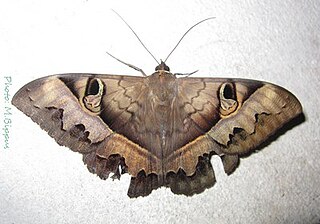
Cyligramma is a genus of moths of the family Noctuidae.
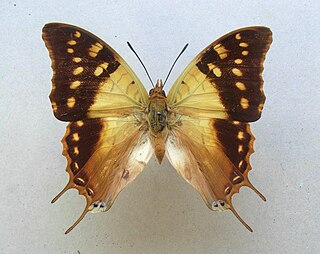
Charaxes antamboulou, the Madagascar green-veined charaxes, is a butterfly of the family Nymphalidae. The species was first described by Hippolyte Lucas in 1872. It is found in Madagascar. The habitat consists of Afrotropical forests and woodland.
Clione limacina, known as the naked sea butterfly, sea angel, and common clione, is a sea angel found from the surface to greater than 500 m (1,600 ft) depth. It lives in the Arctic Ocean and cold regions of the North Atlantic Ocean. It was first described by Friderich Martens in 1676 and became the first gymnosomatous "pteropod" to be described.

Cyligramma duplex is a moth of the family Noctuidae. It is found in Madagascar. It is a nocturnal insect known to rest in caves during the day, where it may be preyed upon by the gecko Paroedura tanjaka. Many dead individuals can reportedly be found covered with white fungus.

Cyligramma magus is a moth of the family Noctuidae first described by Félix Édouard Guérin-Méneville in 1844. It is found in most of Sub-Saharan Africa.
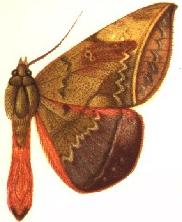
Cyligramma amblyops is a moth of the family Noctuidae. This species of moth is commonly found in the Gold Coast region of Western Africa, now part of Ghana.
Cyligramma conradsi is a moth of the family Noctuidae. This moth species is commonly found in Tanzania.

Cyligramma latona, the cream-striped owl, is a moth of the family Noctuidae. The species was first described by Pieter Cramer in 1775.

Cyligramma fluctuosa is a moth of the family Noctuidae. It is found in most parts of Africa, from Sénégal in the West to Kenya in the East, and Egypt in the North to South Africa, including the Indian Ocean islands
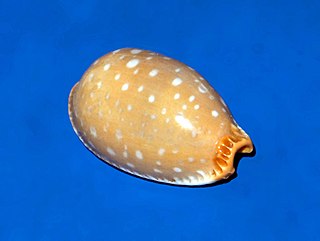
Staphylaea limacina, common name slug-like cowry, is a species of sea snail, a cowry, a marine gastropod mollusk in the family Cypraeidae, the cowries.
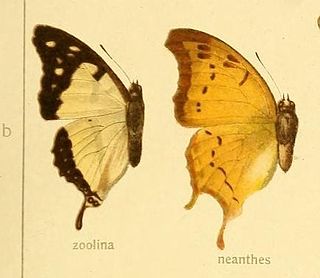
Charaxes zoolina, the club-tailed emperor or club-tailed charaxes, is a butterfly of the family Nymphalidae. It is found in southern Africa.
Limacina retroversa is a distinct species of swimming planktonic gastropods, belonging to a group of predatory sea snails known as sea butterflies (Thecosomata). The name Limacina retroversa describes the unique morphology of this sea snail, including its slug-like body and coiled, backwards-turning shell. They are typically found in the epipelagic zone of cold, polar waters, but can be found worldwide, in any ocean. L. retroversa are currently under threat, as their numbers are decreasing due to rising global carbon levels and other human-caused climate threats.
The following is an index of Mauritius-related topics by alphabetical order. For a list by topic, see list of Mauritius-related topics
Clione okhotensis is a species of sea angel, a pelagic marine gastropod in the family Clionidae.








